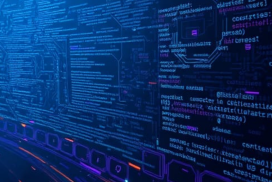The dream of creating artificial intelligence, of imbuing machines with the capacity to think and learn, is a long-standing one, stretching back centuries in philosophical thought and fictional tales. However, the formal history of Artificial Intelligence (AI) as a scientific discipline began in the mid-20th century, fueled by advancements in computing and a group of Read More …
Category: Computers
Random Forests in Artificial Intelligence
Random Forests are an ensemble learning method widely used in artificial intelligence (AI) for classification and regression tasks. This technique builds upon the concept of decision trees, combining the predictions of multiple trees to enhance accuracy and robustness. By leveraging the strengths of individual decision trees while mitigating their weaknesses, Random Forests have become a Read More …
Integrating Docker into a CI/CD Pipeline
A typical Dockerized CI/CD pipeline, often orchestrated by tools like Jenkins, GitLab CI/CD, GitHub Actions, or Azure DevOps, follows these stages: Code Commit and Trigger: The process begins when a developer commits code to a version control system (VCS) like Git. This commit, particularly to a designated branch triggers the CI/CD pipeline automatically via a web Read More …
Docker for IT Professionals
Docker containers has moved beyond a buzzword to become a cornerstone of modern infrastructure and software deployment. At its core, Docker addresses long-standing challenges in application portability, dependency management, and environmental consistency, offering a totally new way to approach to how we build, ship, and run software. Historically, the phrase “it works on my machine” Read More …
Conference Video – A deep look into a Chinese advanced attack
These are the videos from Derbycon 2015:
Decision Trees in Artificial Intelligence
Decision trees are a popular and intuitive method used in artificial intelligence (AI) for classification and regression tasks. They represent a model in the form of a tree-like structure, where each internal node corresponds to a decision based on an input feature, each branch represents the outcome of that decision, and each leaf node signifies Read More …
SVM – Support Vector Machines
Support Vector Machines (SVMs) are a powerful supervised learning algorithm used in artificial intelligence (AI) for classification and regression tasks. Developed in the 1990s by Vladimir Vapnik and his colleagues, SVMs are particularly effective in high-dimensional spaces and are known for their robustness in handling both linear and non-linear data. How SVMs Work The primary Read More …
Generative AI
While “Generative AI” isn’t an acronym, it’s a fundamental concept in the field. Think of it like this: traditional AI often focuses on analyzing existing data – identifying patterns, classifying information, or making predictions based on what it has already seen. Generative AI, on the other hand, goes a step further; it learns the underlying Read More …
hacker TV – Understanding buffer overflow exploitation
The fascinating interplay of CPU, stack, C-compiler and shellcode in a nutshell Everything started with Aleph One’s paper “Smashing the Stack for Fun and Profit”. These techniques are still the basis for modern exploitation of buffer, heap and format string vulnerabilities. We will give a swift overview about C functions, stack usage, assembler, gcc, gdb Read More …



